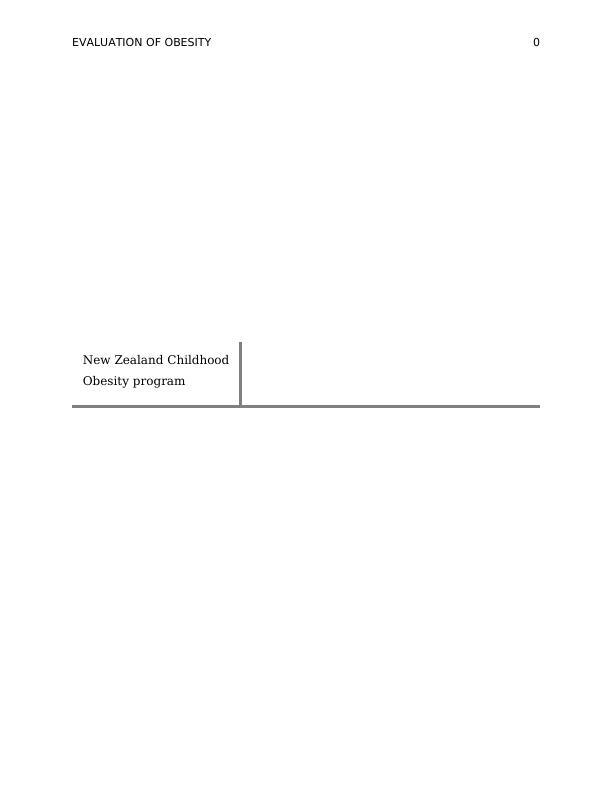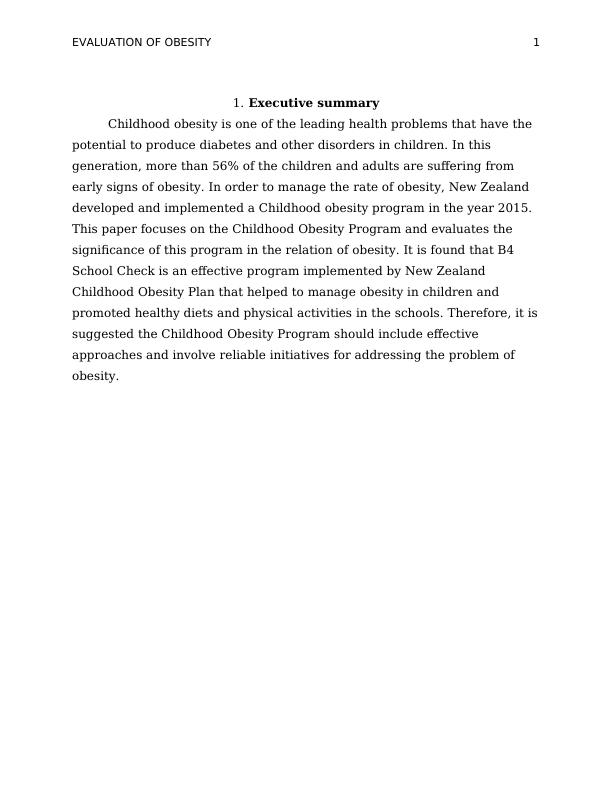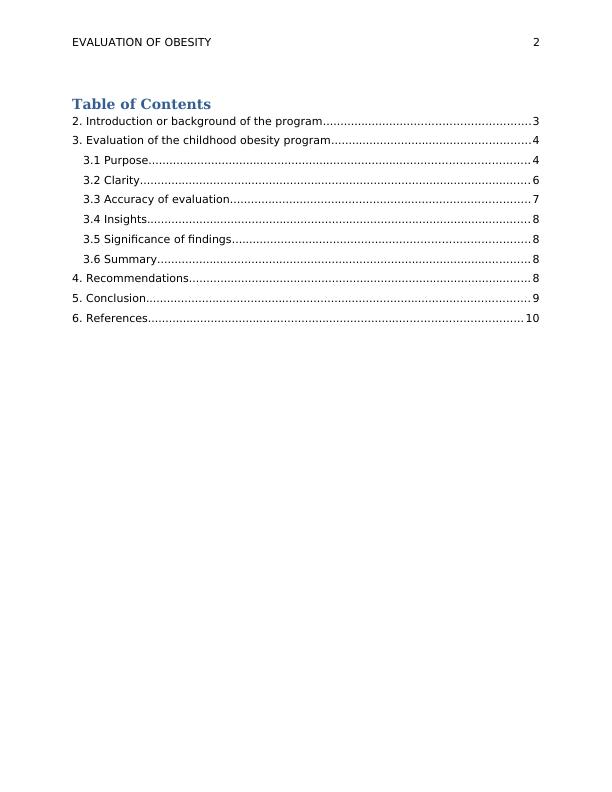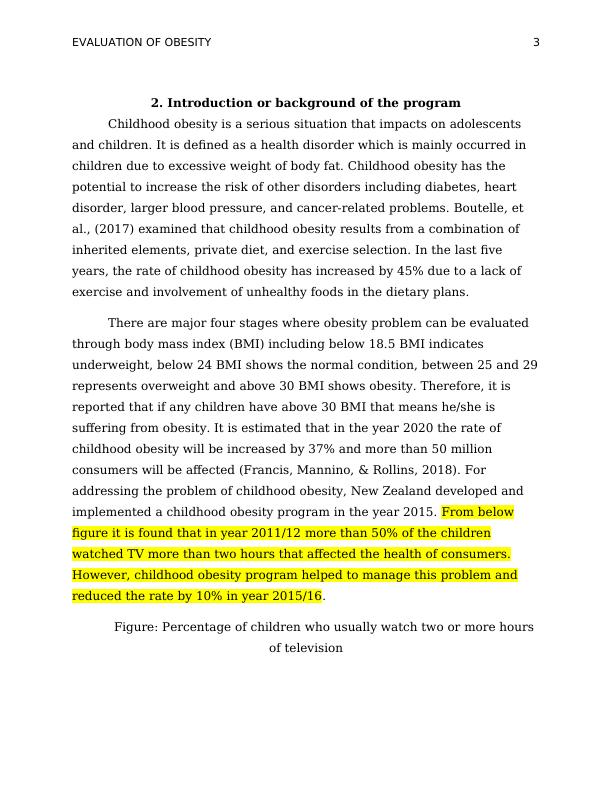Evaluation of Obesity - Childhood Obesity
This evaluation report focuses on the New Zealand Childhood Obesity Plan/Programme and evaluates its significance in addressing childhood obesity.
15 Pages3489 Words12 Views
Added on 2022-08-14
Evaluation of Obesity - Childhood Obesity
This evaluation report focuses on the New Zealand Childhood Obesity Plan/Programme and evaluates its significance in addressing childhood obesity.
Added on 2022-08-14
ShareRelated Documents
End of preview
Want to access all the pages? Upload your documents or become a member.
Health Promotion of Obesity - PDF
|6
|1401
|108
Childhood Obesity Program - Methodology
|5
|523
|8
Evaluation and Treatment of Childhood Obesity
|2
|640
|18
A Report on Childhood Obesity
|9
|1533
|25
Impact of Obesity on Psychological Well-being of Youth
|9
|1672
|212
Public health programs for obesity Assignment 2022
|9
|2757
|27




